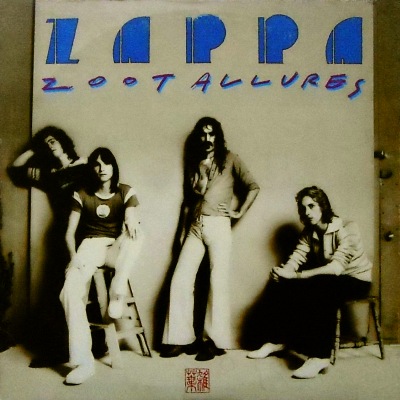★★★★★
Live record from New York was moot point in the crisis between Frank Zappa and his manager. The imbroglio became Zappa’s victory, leading to full artistic and business independence and forming phenomenon of mature Zappa’s live performances. In December 1976, between Christmas and New Year Frank Zappa and his band had played in Palladium four shows for 14 000 listeners. In 1977 he edited some material for double LP which was released the same year in UK by DiscReet Records label. Album has been immediately withdrawn and reedited by DiscReet distributor Warner Bros. This was the moment small Zappa’s company has been losing its independence. The original idea became the part of 3CD album Läther, the project realized in 1996. Censored and shortened version of the album has been published in March 1978. Despite these manipulations album has won commercial success and in Billboard 200 albums chart Zappa in New York it took 57th position.
Even in such form Zappa in New York was the album setting new trends. Totally renewed band was not the straight continuation of the idea of consecutive Mothers of Invention lineups. New faces were singer and guitarist Ray White, bass guitarist and singer Patrick O’Hearn and both were active in next years. From Saturday Night Live band came strong wind and brass section with Brecker brothers Randy (tp) and Mike (ts), Lou Marini (as), Ronnie Cuber (bs, cl) and Tom Malone (tb). It was like new incarnation of Hot Rats band. And musicians known from Mothers of Invention, Ruth Underwood and Terry Bozzio who was also singing, were the core of the band. Interesting member of this lineup was Eddie Jobson, singer, keyboardist and violinist, a legend of British progressive rock playing with Frank Zappa for short period only.
Even in such form Zappa in New York was the album setting new trends. Totally renewed band was not the straight continuation of the idea of consecutive Mothers of Invention lineups. New faces were singer and guitarist Ray White, bass guitarist and singer Patrick O’Hearn and both were active in next years. From Saturday Night Live band came strong wind and brass section with Brecker brothers Randy (tp) and Mike (ts), Lou Marini (as), Ronnie Cuber (bs, cl) and Tom Malone (tb). It was like new incarnation of Hot Rats band. And musicians known from Mothers of Invention, Ruth Underwood and Terry Bozzio who was also singing, were the core of the band. Interesting member of this lineup was Eddie Jobson, singer, keyboardist and violinist, a legend of British progressive rock playing with Frank Zappa for short period only.
 |
| Zappa in New York (1978) |
Due to corporation censorship, album was shorter than usual. Side one was 11 minutes only, side two 15 minutes and side three and side four were 17 minutes each. It was easy to figure out that something was missing. Opening Titties and Beer has been shortened to 5:31 omitting long fragments of improvising dialogue with the devil played by Terry Bozzio. Another intended for this album narrative with Terry Bozzio acting one of Warner Bros. stars Punky’s Whips was excluded and published five years later, when Zappa has regained full rights to his own material. Other great narrative songs were two songs filling the entire side three – sung by Zappa satirical ballad defined as “just another love song”, Honey, Don't You Want a Man Like Me? and blues ballad The Illinois Enema Bandit, based on a true story on criminal activity of Michael H. Kenyon a great performance of Ray White opening his long stage with Frank Zappa’s bands.
Narrative, satirical songs and even improvised sketches were always extremely popular part of Zappa’s public performances. But Zappa in New York was composed as contrasting juxtaposition of quite easy popular songs and pieces of highest complexity level. In such compositions as Manx Needs Women and Black Page Zappa was using techniques and ideas taken from serialism and other conceptions of composition. Thanks to some citations and references to masters of contemporary music like Igor Stravinsky, Edgar Varese and many others, he made outstanding chance of intellectual adventure, bridging the gap between listeners with different experiences and levels of musical knowledge. As I can say observing my friends listening to Frank Zappa’s records, this idea was quite effective way to promote language of new music.
Narrative, satirical songs and even improvised sketches were always extremely popular part of Zappa’s public performances. But Zappa in New York was composed as contrasting juxtaposition of quite easy popular songs and pieces of highest complexity level. In such compositions as Manx Needs Women and Black Page Zappa was using techniques and ideas taken from serialism and other conceptions of composition. Thanks to some citations and references to masters of contemporary music like Igor Stravinsky, Edgar Varese and many others, he made outstanding chance of intellectual adventure, bridging the gap between listeners with different experiences and levels of musical knowledge. As I can say observing my friends listening to Frank Zappa’s records, this idea was quite effective way to promote language of new music.




















